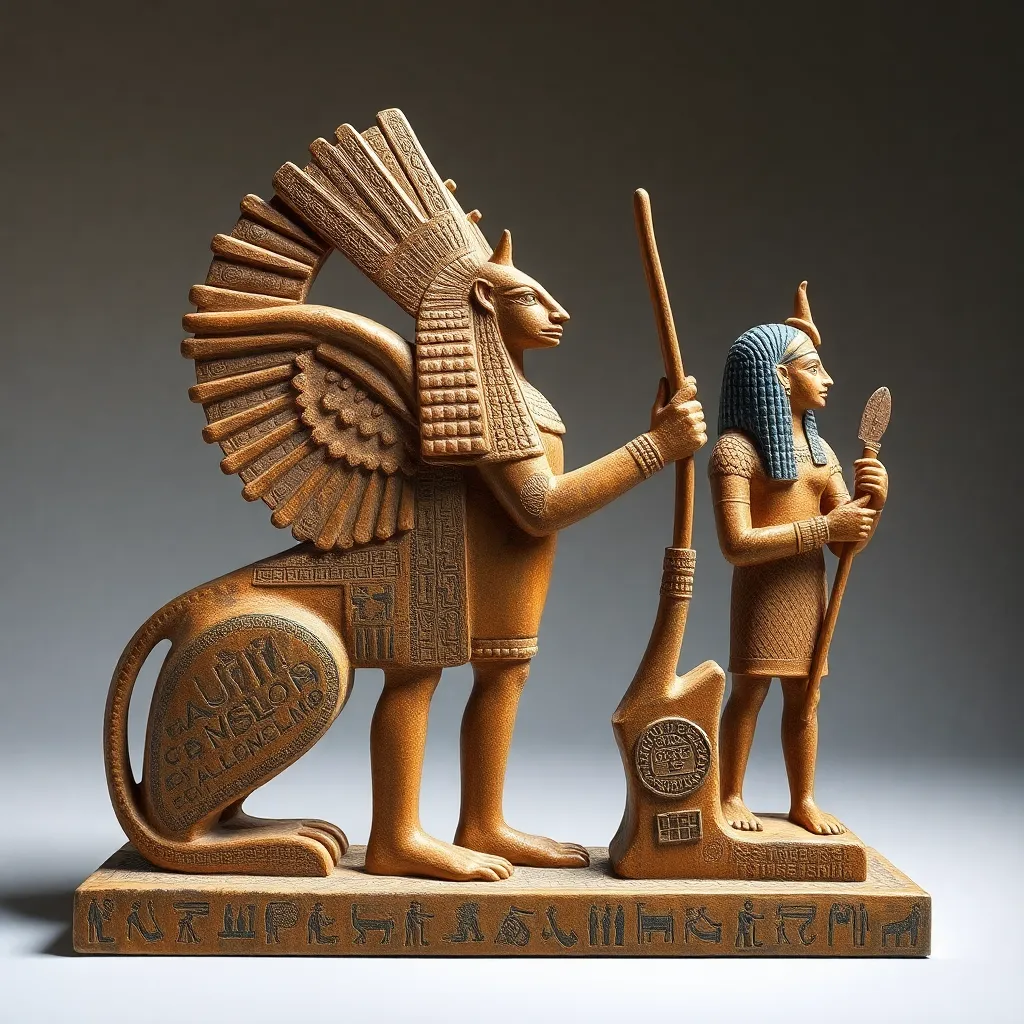Atenism and the Art of the Amarna Period
I. Introduction to Atenism
Atenism was a revolutionary religious movement in Ancient Egypt that emerged during the reign of Pharaoh Akhenaten. It marked a significant departure from the traditional polytheistic beliefs that had dominated Egyptian religion for centuries. Instead of worshiping a pantheon of gods, Atenism centered around the worship of a single deity, the Aten, represented as the sun disk.
The historical context of Atenism is rooted in the Amarna Period, a time characterized by significant political and cultural changes. Akhenaten, previously known as Amenhotep IV, reigned from approximately 1353 to 1336 BCE, and his reign is often noted for its radical reforms in religion and art.
II. The Rise of Akhenaten and the Aten
Akhenaten’s journey to becoming a proponent of Atenism began with a personal revelation that led him to reject the worship of traditional gods like Amun and Ra. He sought to establish the Aten as the sole deity, promoting a form of monotheism that was unprecedented in ancient Egyptian history.
- Background of Akhenaten: Born as Amenhotep IV, he was the son of Amenhotep III and Queen Tiye. His upbringing in a polytheistic society laid the groundwork for his eventual transformation.
- Transition to Monotheism: Akhenaten’s shift from traditional beliefs to the worship of Aten involved significant religious reforms, including the closure of temples dedicated to other gods.
The establishment of Aten as the sole deity had profound impacts on Egyptian society. It not only altered religious practices but also affected the political landscape, as the pharaoh positioned himself as the intermediary between the Aten and the people.
III. Characteristics of Amarna Art
The Amarna Period is renowned for its distinctive artistic style, which represented a significant departure from the rigid conventions of earlier Egyptian art. This new art form emphasized realism and naturalism, reflecting the changes in society and religion.
- Departure from Traditional Conventions: Amarna art broke away from the idealized forms of previous periods, embracing more dynamic and expressive representations.
- Emphasis on Realism: Artists portrayed figures with more natural proportions and gestures, showcasing a greater emotional depth.
- Unique Representations of the Royal Family: The royal family, including Akhenaten, Nefertiti, and their children, were depicted in intimate and informal settings, highlighting their humanity.
IV. Architectural Innovations During the Amarna Period
Akhenaten’s reign also witnessed remarkable architectural innovations, particularly the construction of a new capital city, Akhetaten, which is modern-day Amarna. This city was specifically designed for the worship of the Aten.
- Construction of Akhetaten: The city featured open-air temples and was strategically located to receive sunlight, enhancing its spiritual significance.
- Innovations in Temple Design: The temples were characterized by their open-air layouts, allowing for direct interaction with the sun’s rays, which were thought to be the physical manifestation of the Aten.
- Urban Planning: Akhetaten was designed with wide streets and spacious layouts, reflecting a planned approach to urban development.
V. Symbolism and Iconography in Amarna Art
Symbolism played a crucial role in Amarna art, particularly in representations of the Aten and its rays. The iconography of the period conveyed deeper meanings and reinforced the religious beliefs of Atenism.
- Representations of the Aten: The Aten was often depicted as a sun disk with rays extending downwards, each ending in hands that offered ankhs, symbolizing life.
- Symbolic Use of Color and Form: Bright colors and flowing forms were employed to convey the vibrancy of life and the divine nature of the Aten.
- Portrayal of Akhenaten and Nefertiti: The royal couple was often depicted in an idealized yet realistic manner, suggesting their divine connection to the Aten.
VI. Social and Political Implications of Atenism
The rise of Atenism brought about significant social and political changes in Ancient Egypt, particularly concerning the traditional power structures of the priesthood and the role of women.
- Religious Reforms: The closure of temples dedicated to other gods diminished the power of the traditional priesthood, leading to social unrest.
- Role of Women: The Amarna Period is notable for the elevated status of women, particularly Nefertiti, who was depicted as a powerful figure alongside Akhenaten.
- Reactions from Different Social Classes: While some embraced the new religion, others resisted, leading to a divide between the elite and the common people.
VII. The Decline of Atenism and the Amarna Artistic Style
Following the death of Akhenaten, Atenism faced a swift decline as traditional polytheistic beliefs were restored. The subsequent rulers, including Tutankhamun, sought to reinstate the worship of the old gods.
- Restoration of Traditional Polytheism: Akhenaten’s successors dismantled the religious structures he had established, reinstating the traditional pantheon of gods.
- Changes in Artistic Style: Art reverted to more conventional forms and practices, emphasizing the idealized representations of gods and pharaohs.
- Legacy of the Amarna Period: Despite its decline, the Amarna Period left an indelible mark on Egyptian history, influencing future artistic movements and religious thought.
VIII. Conclusion: The Lasting Impact of Atenism and Amarna Art
The Amarna Period represents a unique chapter in the history of Ancient Egypt, characterized by bold artistic innovations and profound religious transformations. Atenism, while short-lived, challenged the conventional beliefs of its time and sparked discussions about monotheism that would resonate throughout history.
The significance of the Amarna Period in art history cannot be overstated; it laid the groundwork for future artistic developments and influenced subsequent religious practices. The legacy of Akhenaten and the Amarna artistic style continues to fascinate scholars and enthusiasts alike, representing a period of innovation and change that remains relevant in contemporary discussions of ancient history.




